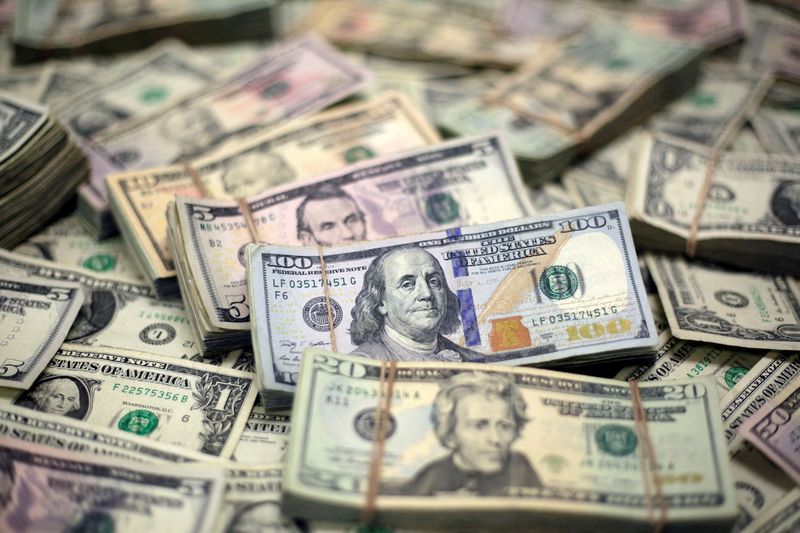A look at the day ahead in the US and global markets by Mike Dolan
Jerome Powell will take center stage at the Federal Reserve’s Jackson Hole jamboree on Friday, but the Fed chairman would have to sound super hawkish to prevent the dollar from posting one of its worst weeks of the year.
Powell’s colleagues have already done a good job tempering expectations that the Fed’s first rate cut next month will be as much as 50 basis points — and futures markets are squarely priced for little more than a quarter-point move.
Susan Collins, chair of the Boston Federal Reserve, said Thursday that the timing “seems appropriate” to begin easing, but added that she favored a “gradual methodical approach to revising our policy stance over time ”.
The latest US business surveys in August underscored that lack of urgency as they exceeded expectations, largely due to strong responses from service sector companies. House sales in July also exceeded expectations.
But it wasn’t all fine and dandy: the manufacturing sector was still stuck in contraction mode and weekly unemployment benefits were rising. Furthermore, the global economic surprise index compiled by Citi is now trading at its most negative reading since the depths of 2020’s pandemic lockdowns.
And so the price for ‘restrictive’ US interest rates remains low, almost 100 bps of this year’s Fed cuts remain in futures prices and the dollar will likely struggle to reverse this month’s sharp decline in that environment.
This is especially true for the yen, where Kazuo Ueda, governor of the Bank of Japan, told parliament that the central bank will implement further interest rate hikes as long as incoming economic data holds up, as currently believed. And in that respect, the latest Japanese inflation figures were right in line, with an annual increase in consumer prices for July of 2.7%, as expected.
While acknowledging the caution in policy following the recent market turbulence, Ueda told parliament: “Japan’s short-term interest rates are very low. If the economy is in good shape, they will rise to levels that are considered neutral.”
The dollar/yen fell back below 146 after the testimony and the stock benchmark closed 0.4% higher.
The yield on two-year government bonds barely remained at 4% in the run-up to Powell’s keynote speech at 10 a.m. New York time, albeit more than 10 basis points higher than the low of the week.
And stock futures on Wall Street recovered much of Thursday’s swoon ahead of Friday’s bell, still looking at record highs and coming within half a percent of yesterday’s intraday. The volatility gauge fell to just above 17 – a fraction below the long-term median.
Perhaps just as big as Powell’s talk about stock market megacaps is his approach to Wednesday’s quarterly earnings report from artificial intelligence vendor Nvidia (NASDAQ:).
In politics, Kamala Harris, vice president and Democratic nominee for the White House election in November, delivered her key speech late Thursday at the Democratic convention in Chicago, saying she will seek to pass a tax cut for the middle class as one of her plans.
Although the gap in the betting markets has narrowed over the past week, the PredictIt site shows that Harris remains the favorite to win the election over challenger Donald Trump.
In foreign business news, Swiss food group Nestle lost 1.5% after announcing it will replace CEO Mark Schneider with business veteran Laurent Freixe.
Key developments that should give more direction to US markets later on Friday:

* Sales of new homes in the US in July; Mexico’s second quarter current account
* Fed Chairman Jerome Powell speaks in Jackson Hole; Bank of England Governor Andrew Bailey and Norwegian Central Bank Governor Ida Wolden Bache will also speak at the symposium
(By Mike Dolan, Editing by Timothy Heritage; mike.dolan@thomsonreuters.com)


